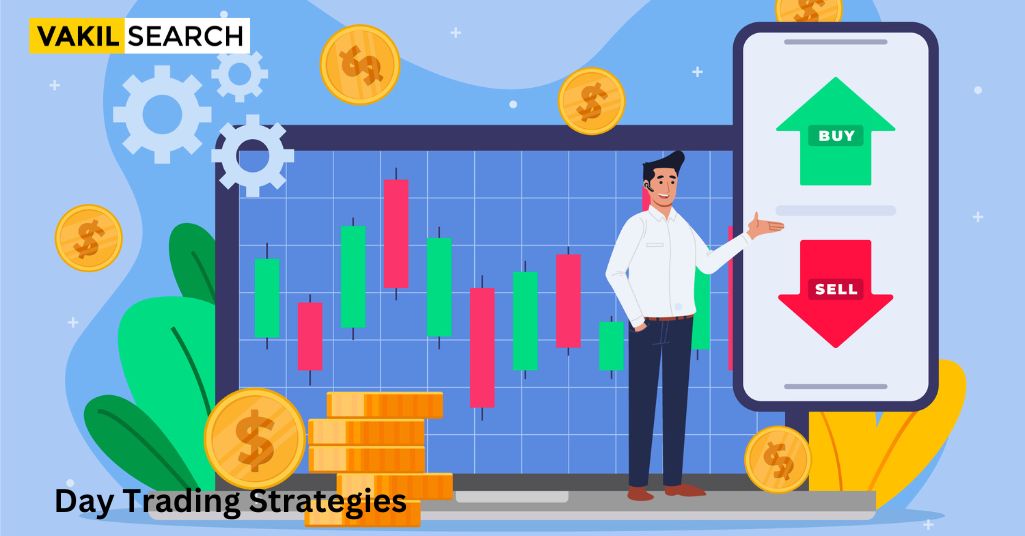Day trading is a trading strategy where individuals buy and sell financial instruments within the same trading day, aiming to profit from short-term price fluctuations.
Intraday Trading Strategies helps the individuals buy and sell financial instruments within the same trading day, aiming to profit from short-term price fluctuations. It involves taking advantage of intraday market movements and leveraging technical analysis, chart patterns, and market indicators to make quick trading decisions. Here are a few popular day trading strategies:
Top 10 Intraday Trading Strategies
Day trading refers to the practice of buying and selling financial instruments within the same trading day to profit from short-term price movements. Here are the top 10-day trading strategies:
- Momentum Trading: This strategy involves identifying stocks or other assets with strong upward or downward price momentum and entering trades to capture short-term price movements.
- Scalping Strategy: Scalping involves making multiple quick trades to take advantage of small price movements. Traders aim to profit from the bid-ask spread and typically hold positions for a few seconds to minutes.
- Pullback Trading Strategy: Pullback trading involves identifying stocks or assets that have experienced a temporary price retracement within an ongoing trend. Traders look for opportunities to enter trades when the price retracement ends and the trend resumes.
- Breakout Trading: Breakout traders look for price breakouts above resistance levels or below support levels. They aim to capitalize on the potential acceleration in price movement that occurs when a stock or asset breaks out of a trading range.
- News Trading: Traders who employ news trading focus on taking positions based on the impact of news releases or significant events on the market. They aim to profit from the volatility and price movements triggered by news events.
- Use Stop Losses: Implementing stop losses is crucial in day trading to limit potential losses. A stop loss is a predetermined price level at which a trade will be automatically exited to minimize losses if the trade moves against expectations.
- Don’t Expect Outsized Gains: Day traders should set realistic profit targets and avoid chasing unrealistic gains. It’s important to have a disciplined approach and not let emotions drive trading decisions.
- Only Trade Trends, Not Guesses: Day traders often focus on trading with the prevailing trend rather than trying to predict future price movements. This approach can increase the probability of successful trades.
- Start Small: It’s advisable for beginners to start with small trade sizes and gradually increase as they gain experience and confidence. This helps manage risk and allows for learning from mistakes without significant financial losses.
- Don’t Try to Win Every Battle: Accept that not every trade will be a winner. Successful day traders focus on maintaining a positive overall trading expectancy by ensuring that winning trades outweigh losing trades.
Remember that day trading involves significant risks, including the potential for substantial financial losses. It’s important to thoroughly understand these strategies, practice with a virtual paper trading account, and consider seeking guidance from experienced traders or financial advisors before actively engaging in day trading.
Other Important Topics:

